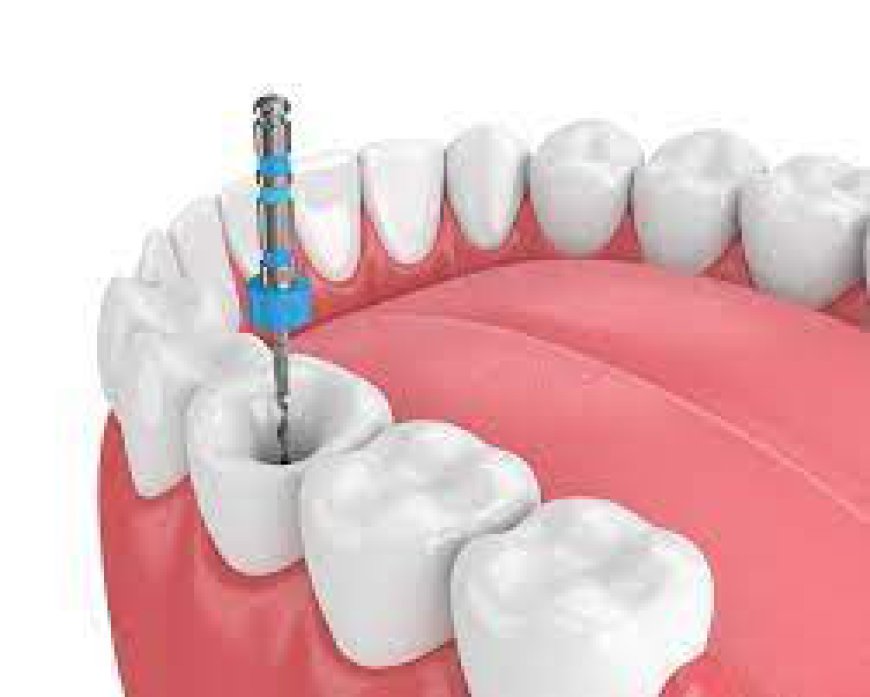Advanced Technology in Root Canal Procedures
Discover expert root canal treatment options for a pain-free smile. Learn about advanced techniques and compassionate care at Best Root Canal Treatment. Book your consultation today!

Introduction to Advanced Technology in Root Canal Procedures
Root canal therapy, also known as endodontic treatment, is a procedure aimed at saving a tooth that is severely infected or decayed. Traditionally, this process involved manually cleaning out the infected pulp tissue and shaping the Best Root Canal Treatment Dubai with specialized tools. However, advancements in technology have introduced new techniques and equipment that have revolutionized this essential dental procedure.
Understanding Root Cana treatment
Root canal treatment, once feared for its reputation of being painful and daunting, has undergone a transformative evolution with the integration of advanced technology. These innovations have not only improved the efficiency and precision of root canal procedures but have also significantly enhanced patient comfort and outcomes. From digital imaging to robotic-assisted instrumentation, the landscape of endodontic treatment has been reshaped, promising better results and reduced treatment times. This article explores some of the cutting-edge technologies that are revolutionizing root canal procedures today.
Digital Imaging and 3D Cone Beam CT Scanning
One of the significant advancements in root canal procedures is the use of digital imaging techniques. Traditional X-rays have been replaced or supplemented with digital radiography and 3D Cone Beam Computed Tomography (CBCT) scanning. These technologies provide detailed, three-dimensional images of the tooth and its surrounding structures, offering endodontists a clearer view of the root canal anatomy. This enhanced visualization aids in more accurate diagnosis and treatment planning, ensuring that no infected tissue or accessory canals are overlooked.
Electronic Apex Locators and Ultrasonic Instruments
Electronic apex locators (EALs) are another technological breakthrough in root canal procedures. These devices use electronic signals to precisely measure the length of the root canals, ensuring that the filling material reaches exactly to the apex of the tooth. This accuracy helps in reducing the risk of overfilling or underfilling the canal, which can lead to treatment failure or complications.
Ultrasonic instruments have also become integral to modern root canal therapy. These devices use high-frequency sound waves to clean and shape the root canals effectively. Ultrasonic tips vibrate at ultrasonic frequencies, allowing for precise removal of infected tissue and debris from even the most complex canal systems. This thorough cleaning improves the success rate of root canal treatments and reduces the likelihood of reinfection.
Rotary and Reciprocating Endodontic Systems
Traditional hand instruments have largely been replaced by rotary and reciprocating endodontic systems. These motor-driven instruments use flexible nickel-titanium files that rotate or reciprocate to efficiently clean and shape the root canals. The use of these systems not only speeds up the procedure but also improves the quality of cleaning and shaping, leading to better outcomes and shorter treatment times for patients.
Laser Technology for Disinfection and Healing
Laser technology has also found its place in modern endodontics, particularly for disinfection and healing purposes. Lasers can effectively sterilize the root canal system by killing bacteria and removing debris from inaccessible areas. Moreover, laser energy can stimulate tissue regeneration and reduce post-operative discomfort, promoting faster healing and recovery for patients undergoing root canal treatment.
Conclusion
The integration of advanced technology into root canal procedures has transformed the field of endodontics, making treatments more efficient, precise, and comfortable for patients. From digital imaging and electronic apex locators to ultrasonic instruments and laser technology, these advancements have significantly improved diagnostic accuracy, treatment outcomes, and patient satisfaction. As technology continues to evolve, the future holds even more promise for further enhancing the effectiveness and accessibility of root canal therapies. Embracing these innovations ensures that root canal procedures remain a cornerstone of modern dental care, preserving natural teeth and promoting oral health for years to come.
